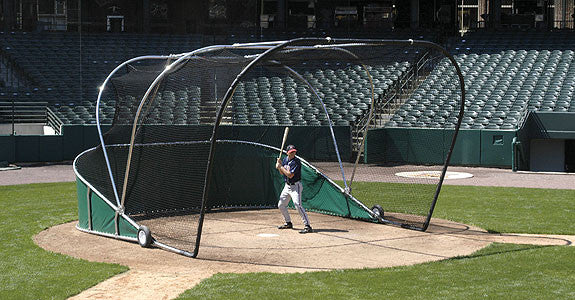As we get into the middle the summer many of us are umpiring tournaments in the final season games before we move into our high school seasons.
Had this unusual situation occur on the field just the other day and wanted to know how you think it should have been called by the umpire.
=====================================
a runner was rounding third base looking back inside to see where the ball was and he ran into the third baseman that had moved all the way to file territory almost in the coaches box. This runner ran into the third baseman did not have the ball fell down ( was asked the injured a little) but after he had fallen to the ground the third baseman receive the ball and take him out. The coach wanted obstruction and to even allow him to score-- the other coach said it was the runners responsibility to know the was going and ran into the third baseman on purpose hoping that there would be a bad throw. What would you rule go to the chatline and give me your answer.
=============================
The umpire ruled as I believe to be correct that it was not obstruction the runner was so far how the baseline running into a player that was clearly away from the bag that it became neither interference nor obstruction just to play that got the runner tagged out. It's unfortunate that he got slightly injured but the third baseman was not in the wrong place he was trying to avoid the runner so no obstruction and the runner did not create interference because there is no interference to involved as a result throw. So no obstruction and no interference we have just the play of the runner getting tagged out at third.
Umpire Arnald Swift
This season has started out really very well with not a lot of controversy, you always have some question about balls and strikes, safe and out,, Fair or foul but those are things every umpire is faced with every game.
The interesting question has come up recently about throwing to an unoccupied base,, I've seen it several times now in the real young baseball were when a guy gets on base they're going to steal and the cancers aren't able to stop them. This can certainly come up at any level but it's more prevalent here. Here's the situation And how I read the rule book and how I call it is an umpire. Runner is at first base, no one has at second has the right handed picture comes set and even lift his leg but makes no move to home, and that's important makes no move to home he sees the runner break so he continues to pivot to second base and throw the runner out. Almost the same thing runner at second base and no one on third as the pitcher comes set and raises his leg again making no move toward home plate the runner breaks he simply steps the third and throws the ball in the runners tagged out.
Now what most coaches want to call is a balk, because they through to an unoccupied base,, what they don't know is the rule that follows that first statement where it says except to put out or drive back and advancing runner. That's all that pitcher did. He never made moved home plate in the throw to second it was just the inside out move, spend move, that every pitcher does going back to second base, when he went to third base it's the same exact move every left-hander does going to first base only this time he went to third two put out or drive back and advancing runner.
Just to finalize this I looked up in the major-league rule book the following: The pitcher, while touching his plate, throws, or feints a throw to an unoccupied base, except for the purpose of making a play;
Rule 6.02 (a)(4) Comment (Rule 8.05(d ) Comment): When determining whether the pitcher throws or feints a throw to an unoccupied base for the purpose of making a play, the umpire should consider whether a runner on the previous base demonstrates or otherwise creates an impression of his intent to advance to such unoccupied base.
=============================
((d) The pitcher, while touching his plate, throws, or feints a throw to an unoccupied base, except for the purpose of making a play;
Rule 8.05(d) Comment: When determining whether the pitcher throws or feints a throw to an unoccupied base for the purpose of making a play, the umpire should consider whether a runner on the previous base demonstrates or otherwise creates an impression of his intent to advance to such unoccupied base.
So next time the pitcher throws to a base that somebody advancing to it's not a balk.
Umpire for 40+ Arnald Swift
COPY CREDIT TO SITE STUMP THE UMP.
Dave from Clearwater, FL asks:
In game 5 of the Toronto and Texas 2015 ALDS, when Shin-Shoo Choo was in the box but his hand was left on the line of the box, Russel Martin went to throw back to his pitcher and the ball hit off of the batter's bat. How is this not interference since Choo's bat was on the line or almost in the field of play (close call) on Choo as Martin inadvertently hit Choo's bat on the throw back to the mound? Thus Rougned Odor scored from 3rd. Furthermore, umpires made a different call (which had the ball being dead and returning Odor to third) before reversing it to allow Odor to score. Why were they allowed to reverse it? Very confused as the rules in baseball are so complex compared to other sports. Thank you!
This play has caused a lot of confusion but this scenario is covered in the Major League Baseball Umpire's Manual. Ruling 29 of this book, which refers to MLB Rule 6.06(c), covers exactly how to handle throws back to the pitcher where the batter potentially interferes. This interpretation states that, as long as the batter does not intentionally interfere with the throw, then, if the batter is standing in the batter’s box and he or the bat is struck, then there is no infraction and the ball is still alive and in play. Even though Choo's bat was potentially out of the box at the moment when the ball hit it, since Choo himself was still in the box and he did not attempt to interfere with the ball, the ball should have remained live allowing the runner to have the chance to score.
The second part of your question is a part that I came across a lot tonight while reading comments on game recaps; why were the umpires allowed to reverse the call after already calling the play dead? It is always the first and main priority of the umpires to get the call right, even if that means reversing a call or making an unpopular decision. Being as this is a very unusual play and one that is not even covered in the general MLB rulebook but instead in their secondary Umpires Manual, it is hard to blame Dale Scott for freezing for a few seconds before calling this play dead. However, as the umpires are expected to do, they paused the game, got together to discuss the play, and then reversed it to ensure they got what very potentially could have been a game deciding call correct by deciding what would have happened if the play hadn't been stopped.
Answered by: Jonathan Bravo
Keywords: MLB Rule 6.06(c), MLB Umpire Manual, Choo, Odor, Martin, Toronto Blue Jays, Texas Rangers
Running Lane and Interference
The batter is out if, in running to first base, the batter-runner is hit by a throw while running outside of the 3 foot running lane, or interferes with the fielder taking the throw at first base. He could be called out even if he is not hit by the throw, if the umpire judges that by being outside the lane he interfered with the fielder’s attempt to field the throw. There must be a throw before interference can be called and the throw must be a quality throw. Rule 6.05(k).
A runner is not free from interference while in the lane, nor automatically guilty when out of the lane. If he is out of the lane he is in serious jeopardy of being called for interference, but it is not automatic, unless he is hit by the throw, or commits an intentional act of interference. The rule states that he is out when out of the lane AND causes interference with the fielder taking the throw. If he is out of the lane and is hit by the throw, that is always interference. If he is in the lane he could still cause interference, but it would have to be something obviously intentional (like grabbing the fielder's arm or glove, or deliberately touching a thrown ball). If the catcher does not make a throw because the runner is outside the lane, this is not interference. Interference with a thrown ball must be intentional. Such as, deliberately making contact with it. Or in this case if the runner is hit by the throw while outside the lane. The lines marking the lane are part of that "lane," but the runner must have both feet within the lane or on the lines marking the lane, to be judged as "in" the lane. Rule 7.09(k) casebook, N.A.P.B.L 4.14.
If the runner is hit by the throw or a collision occurs on his last step before touching the base; generally interference is not called. The runner has to step into fair territory to touch the base that is in fair territory.
-
You must tag the base with your foot on a force out or appeal.
You may tag the base with any part of the body or glove as long as you have firm and secure possession of the baseball in your hand or glove/mitt.
-
The ball is always immediately dead on a balk.
You are correct in high school baseball but in NCAA and professional rules, the ball is dead sometimes immediately but when the balk is followed immediately by a pitch, the ball is delayed dead and we wait until the end of the play and then either enforce the balk or allow the play to stand. If all base runners, including the batter-runner advance one base or more after the balk, the play stands. The coach or manager does not have an option on this rule.
-
If a player's feet are in fair territory when the ball is touched, it is a fair ball.
It is the location of the baseball when it is touched or touches the ground that determines it being fair or foul and not the position of the fielder’s feet.
-
The ball must always be returned to the pitcher before an appeal can be made.
If the ball is live, you may go directly to the missed base or the runner and tag him for missing the base or leaving it too soon on a fly ball that is caught.
-
With no runners on base, it is a ball if the pitcher starts his windup and then stops.
For a balk to be awarded, there needs to be runners because the penalty is 1 base awarded.
- The pitcher must come to a set position before a pick-off throw.
The pitcher need only come to a complete and discernible stop prior to pitching the ball and not for a pick off attempt.
-
The pitcher must step off the rubber before a pick-off throw.
In fact, if he does step off first and the ball is thrown away into dead-ball territory, the award is 2 bases. From the rubber, it is only a 1 base award.
- If a fielder catches a fly ball and then falls over the fence it is a home run.
If the catch occurs before leaving the field of play it is a catch and not a home run.
-
The ball is dead anytime an umpire is hit by the ball.
This is only true on a batted ball that the ball is dead. On a thrown or pitched ball, it is unfortunate but the ball remains live.
-
The home plate umpire can overrule the other umps at anytime.
The home plate umpire has no more right to overrule his partner(s) than they have to overrule him. In certain situations the UIC may have to change a call because of more correct information but no umpire has the right to overrule another.
If the batter does not pull the bat out of the strike zone while in the bunting position, it's an automatic strike.
The batter must actually make an attempt to bunt the pitch in your judgment for it to be ruled a strike. Just leaving it in the strike zone is not enough to consider it an attempt.
---------
. The batter is out if a bunted ball hits the ground and bounces back up and hits the bat while the batter is holding the bat.
If the batter is in the batter’s box when this occurs, it is simply a foul ball. If he is out of the batter’s box at this time, he is ruled out for interference.
---------
The batter is out if his foot touches the plate.
This is true if the entire foot is out of the batter’s box when it touches the plate. Having the foot touch the plate and the batter’s box is not considered out of the batter’s box.
---------
The batter-runner is always out if he runs outside the running lane after a bunted ball.
The batter-runner is only out if he is outside the running lane when he causes the fielder at 1st base to have trouble receiving the throw or he is hit with the throw while he is outside of the running lane.
---------
A runner is out if he slaps hands or high-fives other players, after a homerun is hit over the fence.
In high school and professional baseball this is not true. In NCAA baseball, the 1st time this occurs, it would become a team warning and the next time it occurs it would be an ejection but it is never an out.
---------
Tie goes to the runner.
In baseball, there are no ties. The rule does state that if the ball beats the runner, the runner is out. If the runner beats the ball, he is safe. So, if it is a tie, it really goes to the defense and not the offense.
--------------------
The runner gets the base he's going to, plus one on a ball thrown out-of-play.
The runner gets 2 bases usually from the time of the pitch and other times he would get 2 bases from the time of the throw. There are no one plus one awards. There are only 1, 2, 3 & 4 base awards.
---------
Anytime a coach touches a runner, the runner is out.
The coach cannot touch a runner to help him advance or return to a base during a live ball. However, on a home run out of the park, the coach may touch the runner.
---------
Runners may never run the bases in reverse order.
Runners may not run bases in reverse order to make a travesty of the game. There are many times when the runner has to run in reverse order if the fly ball is caught or sometimes they run the bases in reverse order because they are confused to what took place.
---------
The runner must always slide when the play is close.
There is never a time a runner must slide but there are times if he does not slide, he will be called out for interference. He also has the option of giving himself up, trying to avoid the tag by going around it, reversing directions, etc.
BASEBALL RULES MYTHS
1. The hands are considered part of the bat.
No baby was ever born with a bat in his hands. Therefore, as an umpire you must judge if the ball hit the bat or the batter first.- Unless batter swings then it is a strike-------
2. The batter-runner must turn to his right after over-running first base.
The batter-runner must make an attempt to advance toward 2nd base in order for him to be liable to be tagged out.-------
3. If the batter breaks his wrists when swinging, it's a strike.
This could be one of the criterion in which you judge if he swung or not. The best statement you can make when asked about a check swing is that he attempted or did not attempt to swing at the pitch. Other criterion might be that the barrel of the bat goes past the middle of the batter’s body or not. One other criterion might be that the bat crossed the middle of the plate.-------
4. If a batted ball hits the plate first it's a foul ball.
To rule it foul it must have come to rest in foul territory or be touched in foul territory.-------
5. The batter cannot be called out for interference if he is in the batter's box.
The batter’s actions are what causes interference and not necessarily where he is. In the batter’s box, if he does nothing out of the ordinary, it is more difficult to commit batter interference but it is possible.-------
6. The ball is dead on a foul-tip.
The ball is always live on a foul tip. Therefore runners may be put out or advance at their own risk on a foul tip.-------
7. The batter may not switch batter's boxes after two strikes.
The batter may switch batter’s boxes at any time while the ball is dead.-------
8. The batter who batted out of order is the person declared out.
The batter that is supposed to bat is the one that is declared out.-------
9. The batter may not overrun first base when he gets a base-on-balls.
This is true in National Federation Rules but it is not true in NCAA or professional rules. -------
10. The batter is out if he starts for the dugout before going to first after a dropped third strike.
The batter is out if he leaves the dirt circle around the plate area after a dropped 3rd strike unless he is making an attempt to reach 1st base.










